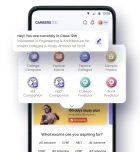What is the procedure of becoming a pilot ?
Becoming a commercial pilot is a dream for many as the career offers an exciting and rewarding career.
The procedure for becoming a piolet is quiet difficult and requires lots of hard work.
You should first of get yourself enrolled in a pilot training programme.
Apply for FAA MEDICAL CERTIFICATE, since an FAA medical certificate is required.
Start taking FLIGHT TRAINING LESSONS,
since Aspiring pilots must pass a written exam and complete at least 40 hours of flight training.
PASS PRIVATE PILOT KNOWLEDGE TEST
Half of this training must be with a flight instructor, and at least 10 hours must be in solo flight time.
PASS PRIVATE PILOT PRACTICAL EXAM
A practical flight test is also required.
Experience of at least 40 hours of flight.
Degree not required; earning a degree may be necessary for commercial posit.
GOOD LUCK!
 1 like
1 like
You will first need to determine what type of aircraft you want to fly. The FAA offers several types of pilot's licenses, including private pilot, recreational pilot, and sports pilot. The types of aircraft that people fly include airplanes, helicopters, balloons, airships, and gliders.
Next, you need to attend an FAA-certified flight school or take private lessons from an FAA-certified instructor. These programs may be found at flight training schools, community colleges, and technical schools. Topics covered include basic aerodynamics, aircraft components, and flight controls, FAA regulations, aircraft weight and balance, basic navigation, flight planning, and aircraft systems. Every hour of training and flight instruction is logged to ensure new pilots have completed the minimum hours needed to learn how to fly an airplane.
Step 2: Earn a Private Pilot's LicenseAlong with a minimum amount of flight hours, students need to demonstrate sufficient skills and knowledge to their flight instructor before they may earn an FAA private pilot's license. This license, also known as a certificate, will allow you to fly an aircraft and carry passengers and baggage without compensation. You will need to earn a commercial pilot's license to get paid to transport people and property.
To earn a private pilot's license, you must be at least 17 years old. Private glider pilots or free flight balloon operators must be at least 16. An FAA medical certificate is required. You must pass a written exam and complete at least 40 hours of flight training. Half of this training must be with a flight instructor, and at least 10 hours must be in solo flight time. A practical flight test is also required.
Step 3: Earn a Commercial Pilot's LicenseIn order to be compensated for transporting people and property, pilots should obtain a commercial license. Applicants must be 18 years or older. While in training, you should be prepared to keep detailed logs of both their in-flight hours as well as their on-ground hours. You should reference the Federal Aviation Regulations (FARS) for specific requirements. In order to receive a commercial pilot's license, students must pass a variety of exams, including both a medical and physical exam (pilots must have 20/20 vision or employ corrective eye wear), a comprehensive written exam, and a flight exam where students can demonstrate their practical knowledge of flying an aircraft. Once pilots have obtained their license, they must pass regular physical screenings and practical flight tests in order to keep the status of the license up-to-date. Commercial pilot licenses apply to airplanes, balloons, helicopters, and other aircraft.





 Reply
Reply











